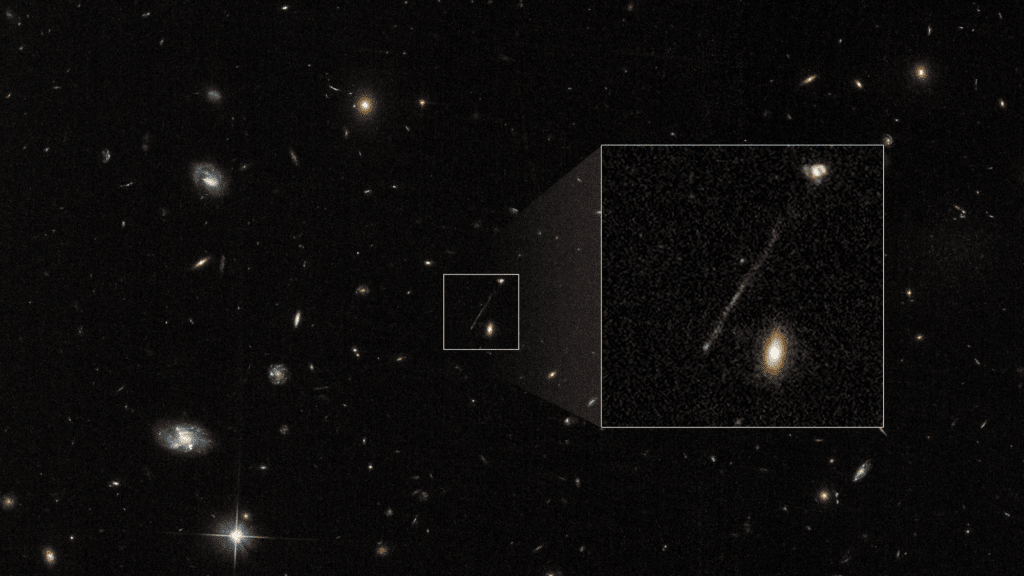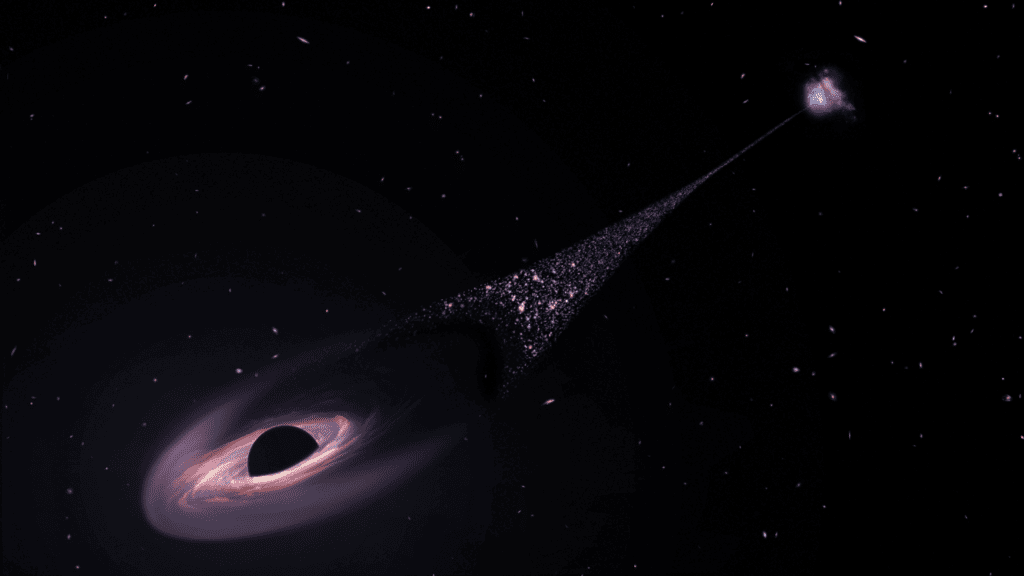Presumably, researchers have discovered a supermassive black hole that is flying away from its galaxy at great speed. In doing so, it leaves a chain of star-forming explosions.
It seems that a cosmic giant has escaped from his galaxy. A new observation from the Hubble Space Telescope shows a string of stars appearing to emerge from a galaxy about 11 billion light-years away. This could indicate that a supermassive black hole has erupted, leaving behind a series of star-forming explosions.
It’s a strange straight line of young blue stars, pointing toward the heart of this young galaxy. “We’ve never seen anything like this before,” says the astronomer. Peter van Dokkum from Yale University, from Discover this rarity . “It looks like something was launched from that galaxy, and now something massive is hurtling through space at incredible speeds.”
Read also
Will there be people on the moon again in 2025?
NASA insists that within two years, Artemis 3 astronauts will be hopping across the moon. Does the recent success of Artemis 1 prove that target date is after all…
An enormous being
It is likely that the supermassive object is a supermassive black hole that lived in the center of the galaxy. At the end of the trail, van Dokkum and his colleagues found a clear concentration of ionized oxygen. These are oxygen atoms that have lost their electrons, making them positively charged. This indicates that the black hole slammed through the gas around it while traveling at a speed of about 1,000 miles per second. The star trail is more than 200,000 light-years across, which means that the black hole left the galaxy about 40 million years ago.
The most likely cause is the interaction between different galaxies, a well-known process that has been thought for decades to lead to the eruption of supermassive black holes, a prediction that may finally be confirmed.
When two galaxies merge, supermassive black holes sink into the center of the new, larger galaxy, as they orbit each other. But if a third galaxy joins in, it could disrupt that dance and catapult one or even all three black holes into interstellar space.

star formation
If the black hole flew away, it would stir up interstellar gas in its environment. In this way it begins to form stars, and with it a sparkling shoot. The researchers required additional observation time from several space telescopes, including Hubble and the James Webb Space Telescope (JWST), to confirm this scenario.
The trail of new stars could also teach us something about how invisible gas behaves around galaxies. “We see this star trail, and those stars were formed from material that was around that galaxy,” van Dokkum says. “This offers an unexpected benefit of learning about the giant reservoirs of matter in which galaxies reside.”

“Thinker. Coffeeaholic. Award-winning gamer. Web trailblazer. Pop culture scholar. Beer guru. Food specialist.”








More Stories
Comet Tsuchinshan-Atlas is ready to shine this fall
Sonos isn’t bringing back its old app after all
Indiana Jones and the Great Circle is coming to PS5 in spring 2025